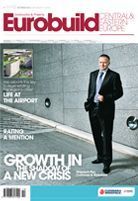Airports were once regarded as noise-polluters best banished beyond the suburbs well away from residential areas. Times have changed. Now developers are clamouring to build on the empty land that originally buffered such ports from civilisation. And with the ?airport city' concept, airports are taking on a new role: the new business heart of the city
If you ask people what they associate Amsterdam with, you might receive some colourful answers but few would talk about its airport. This is perhaps unfair. Amsterdam is noteworthy as the proud birthplace of the 'airport city', a concept whereby logistics, hotels, and offices as well as occasionally retail and entertainment facilities can all be found at or nearby the airport. Weary business travellers need no longer drive into the city centre. Now all the required amenities are provided on site, so like Tom Hanks in the film 'The Terminal', they need never leave the airport. "An airport city is a dynamic environment integrating and enhan






























































